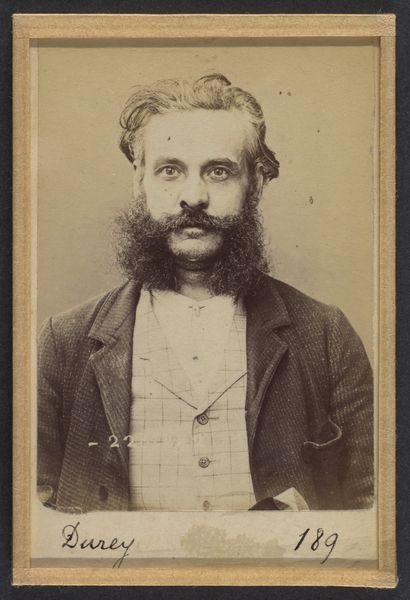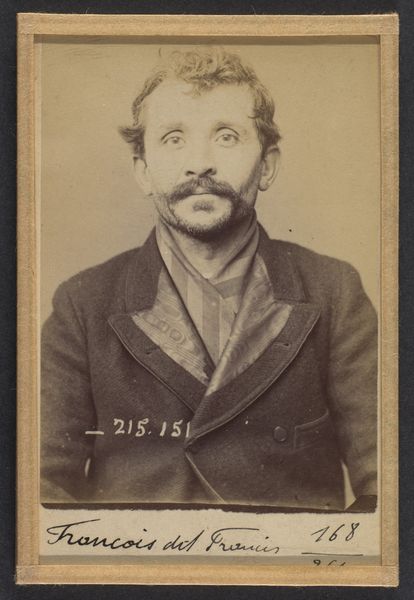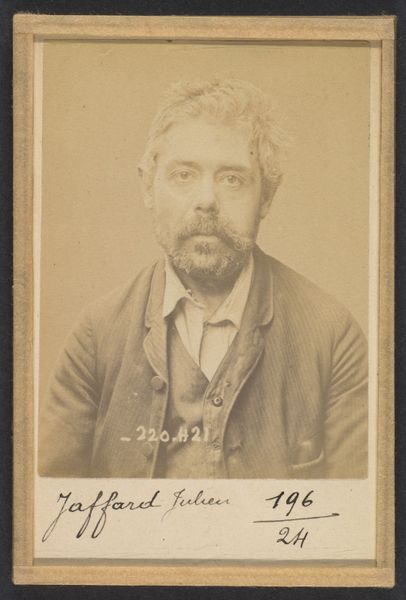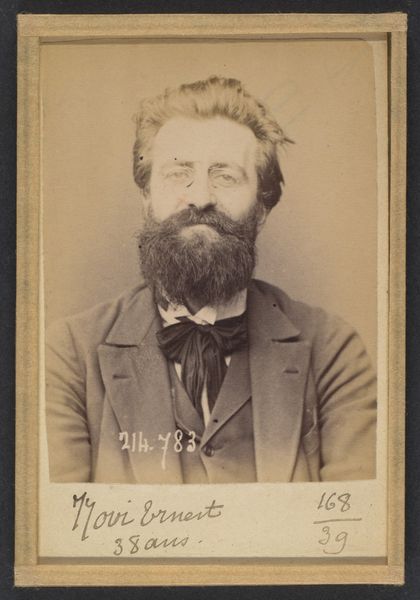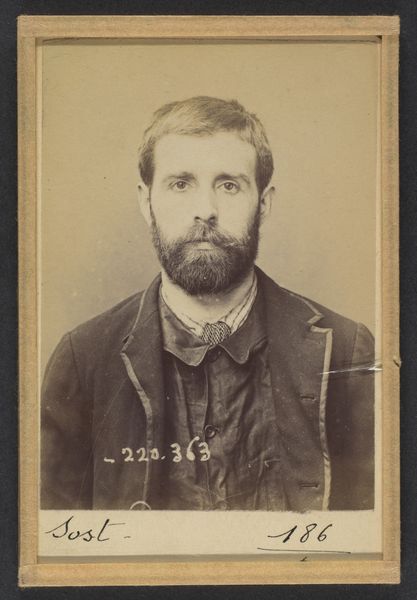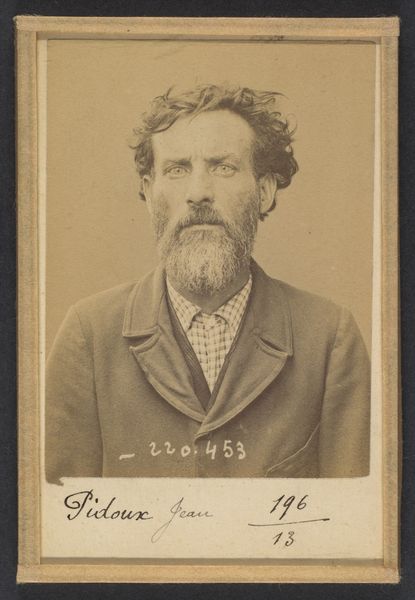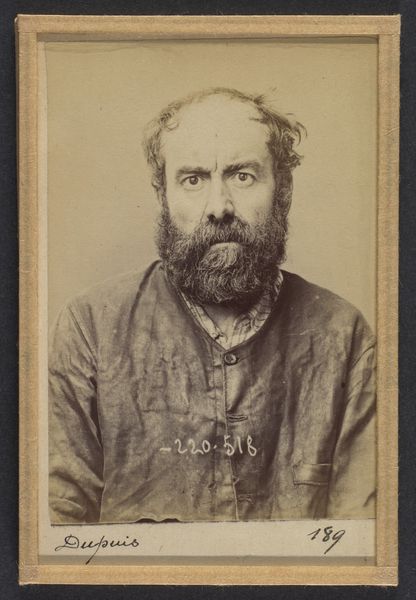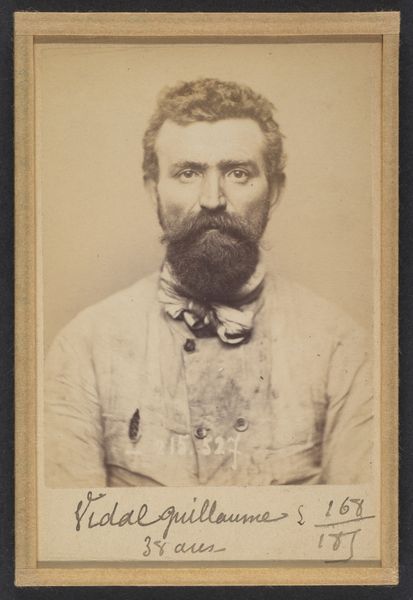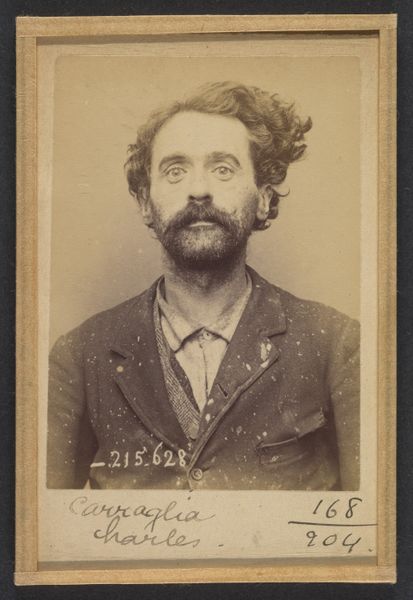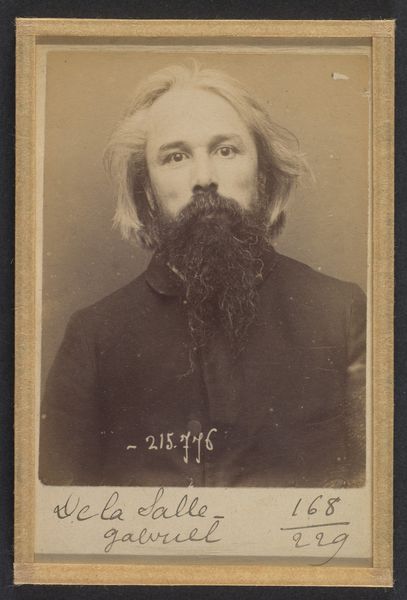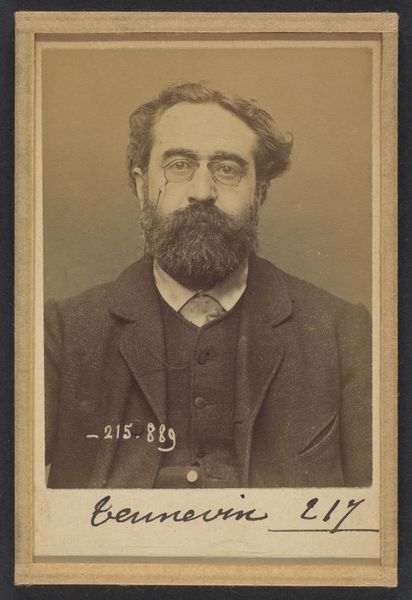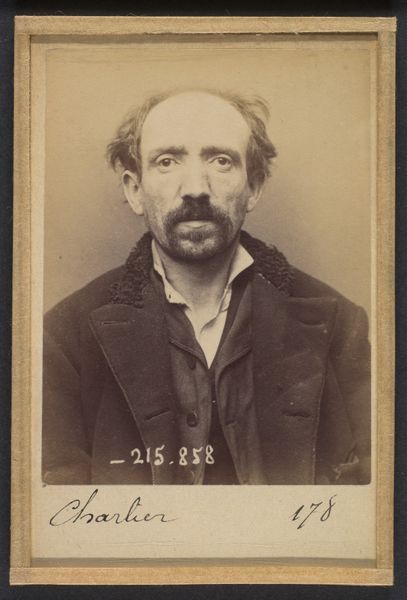
Hivon. Pierre. 45 ans, né à Bourbon le Chambai (Allier). Lithographe. Anarchiste. 4/3/94. 1894
0:00
0:00
photography, gelatin-silver-print
#
portrait
#
photography
#
gelatin-silver-print
#
19th century
#
men
Dimensions: 10.5 x 7 x 0.5 cm (4 1/8 x 2 3/4 x 3/16 in.) each
Copyright: Public Domain
Curator: Looking at this image, the weariness of the man is striking. Editor: Indeed. Let's delve into this gelatin silver print. It's a portrait by Alphonse Bertillon, taken in 1894, and titled "Hivon. Pierre. 45 ans, né à Bourbon le Chambai (Allier). Lithographe. Anarchiste. 4/3/94." You know, the full title, almost like a police record. Curator: The meticulous documentation, down to Hivon Pierre’s birthplace and occupation as a lithographer, speaks volumes. Bertillon was, of course, pioneering methods of criminal identification. It begs the question: Is this art, documentation, or both? The albumen print feels less precious, almost utilitarian, which makes me think about photography's democratization in this era. Editor: Precisely. Bertillon's "portrait parlé," or spoken portrait, attempted to standardize mugshots, influencing surveillance technologies and shaping perceptions of deviance. He wasn't concerned with traditional aesthetics. But consider that Pierre Hivon's anarchist identity made him a target for state surveillance and repression. It wasn’t only about mugshots as mugshots; it's about power, and its influence on individuals' civil liberties. Curator: Right, it's a method for control. The flattened perspective emphasizes details for identification but somehow diminishes the human spirit. He’s not quite looking *at* us; there’s a forced candidness that is very uncomfortable. Look at his hands, by the way, they look really rough as if from labouring at his job. What statement, then, did photography have to say to a world in industrial transition and its treatment of individuals? Editor: Yes, it challenges the Romantic view of art and the artist. Hivon's tired eyes confront the camera directly; his dishevelled clothing indicates hardship. By naming him as an anarchist, is Bertillon complicit in the repression? The inscription makes a very bold statement. It places him immediately as suspicious, and is therefore an intentional statement made by the photographer as an authoritarian voice of the status quo. Curator: Absolutely, it leaves me wondering about the socio-political context surrounding the making of this portrait—this image captures more than Hivon’s physical appearance; it exposes societal anxieties and how individuals were becoming categorized during these eras. Editor: So true; for me, the photograph serves as a critical reminder to reflect on social control’s past and present-day practices, while questioning who gets remembered through what art forms.
Comments
No comments
Be the first to comment and join the conversation on the ultimate creative platform.
